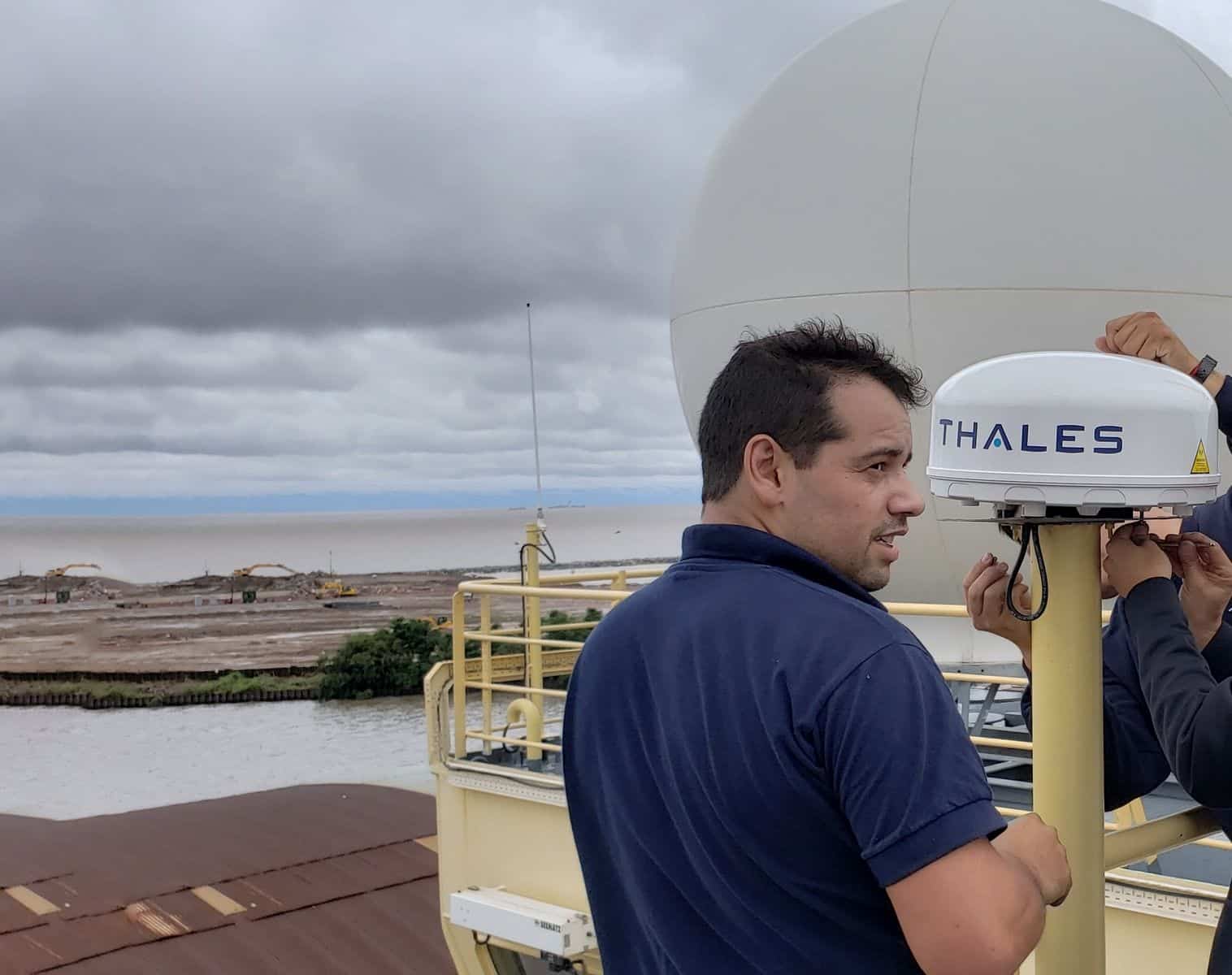15/5/23
AST Networks Australia's iNet-PTT system was installed into two QAS vehicles, The Mt Garnet and Cooktown vehicles, as they regularly operate in poor or non-existent radio coverage areas.
AST Networks has supplied equipment to Miles Electronics in order to conduct trials with AST iNet-PTT solution with the Queensland Ambulance Service (QAS), in the Northern Region of Australia.
Cobham SATCOM, (one of the world’s largest manufacturers of satellite terminal equipment), has developed a new satellite based system with normal radio style Push To Talk (PTT) functionality.
The system, combined with the unique facilities available through AST Point of Presence (POP), enables AST iNet-PTT solution to utilise satellite to transport voice signals via a cost effective, efficient data channel.
Miles Electronics, in conjunction with AST Networks Australia, have worked closely with the Cobham SATCOM development team that was tasked with the iNet-PTT Project.
QAS has a substantial terrestrial based Repeater network in the Northern Region providing coverage to the higher populated areas.
Under the annual Black Spot review, QAS identified areas on the Mulligan Highway and the Kennedy Highway where there was a requirement for improved/extended radio coverage due to high road traffic and an increase in the local population.
The trial was conducted to assess alternative solutions rather than installing expensive, additional repeater infrastructure.
As the system utilises satellite data to transport the voice signals, one of the main objects of the trial was to establish how much data was used per month, in real world situations.
Other objectives of the trial were as follows:
- Overall usability of the system from an operator’s perspective.
- Quality of recovered audio including clarity, loudness and readability.
- Reliability of the iNet-PTT service in remote locations.
- To gain a realistic usage rate for the satellite data component to allow the correct selection of the airtime plan should these systems be implemented.
- Provide feedback on the voice quality of the EXPLORER 325 (E325) whilst in a telephone call.
- Test the E325 telephone voice quality in various geographical locations and in differing weather conditions such as high rainfall as experienced in Northern Qld.
- Gain feedback from the Paramedics to determine if a system such as this is advantageous to them in areas on little or non-existent radio coverage/
- To review the total cost of ownership to use as a basis for financial comparison against the cost of establishing and maintaining terrestrial radio sites.
AST Networks Australia iNet-PTT system was installed into two QAS vehicles, The Mt Garnet and Cooktown vehicles, as they regularly operate in poor or non-existent radio coverage areas. The trial was to take place over a three month period and this was extended by another month to ensure extensive testing was carried out. The existing satellite phones in the two trial vehicles were removed to allow room for the new equipment to be installed.
The system comprises of a Cobham SATCOM TT3647A PTT terminal, an EXPLORER BGAN 325 satellite terminal, and a cellular USB modem. These can be installed into vehicles to provide, communication whilst driving or in fixed locations such as Communications Centres or other stationary facilities.
The iNet-PTT terminal has a controller microphone that allows selection of the various Closed User Groups (CUG) that have been allocated to that terminal. As the system is based on a satellite connection, which uses the Inmarsat Geostationary 14 satellite, the system is not confined to specific areas of operation, as is the case with terrestrial based radio networks.
An additional iNet-PTT system was installed at Reefcom and interfaced to the DX64 dispatch system. A specific “satellite PTT” channel was created on the consoles and for the purpose of the trial it was not linked into the normal operating group of the dispatcher.
Having the system connected to the DX64 gave the operators direct access to the terminal equipment just as any other channel in the region.
AST Networks Australia have installed iNet-PTT server infrastructure located in their Point of Presence (POP) facility in Sydney that controls all call functionality for the units. It also allows access for configuration of the TT4647A terminals as well as performing any firmware upgrades required. Uploading new firmware or making changes to the CUG’s can be initiated at the server level, and downloaded to the PTT terminals when next powered on.
The iNet-PTT has automatic ‘start up’ as it is connected to the ignition. When the equipment powers on, it contacts the iNet-PTT server to establish if there are any updates or configuration changes. If so it will then download the changes, if not it will continue with its start-up procedure. The system then automatically turns off after a pre-set time when the vehicle’s ignition is turned off. This allows multiple devices to be upgraded remotely thus removing the requirement of technical staff having to travel and physically access each unit.
As the TT3467A unit also has the ability to interface a radio to the system, it allows the operators access to the system when not in the vehicle. This has an obvious advantage, as the operators are no longer tied to the vehicle. However also poses an issue if the system is used whilst it is still in terrestrial based radio coverage.
Due to the time delay of the satellite system, the messages transmitted will first be heard over the terrestrial system and then back again the other way. In this instance it is up to the operator to manually connect to the CUG only when they are out of normal radio courage. To alleviate this, a wireless Pacific X10DR microphone was installed into the Cooktown vehicle to effectively separate the normal radio and iNet-PTT systems
In summary, all who utilised the system found it beneficial and found that it improved their operational response commenting that the communication was very clear, even though the voice is highly compressed to ensure efficient use of data over the satellite backhaul.
I believe that the AST iNet-PTT communication system has the potential to greatly improve and enhance our communication abilities.
QAS Mount Garnet OIC
The implementation of this equipment has enhanced our service delivery to all persons; the patient, the on road officer, and general communications.
Rita Kelly, Operation Center Manager
Visit AST Reygar to learn about how they can help you reduce emissions and save money. BareFLEET is AST Reygar’s award-winning remote monitoring and asset management system for maritime vessels.
We are pioneers in developing cutting-edge remote monitoring and asset management systems specifically designed for marine applications. Our award-winning solutions empower you with accurate, real-time insights, ensuring optimal performance, safety, and efficiency for your assets as they navigate the high seas.






